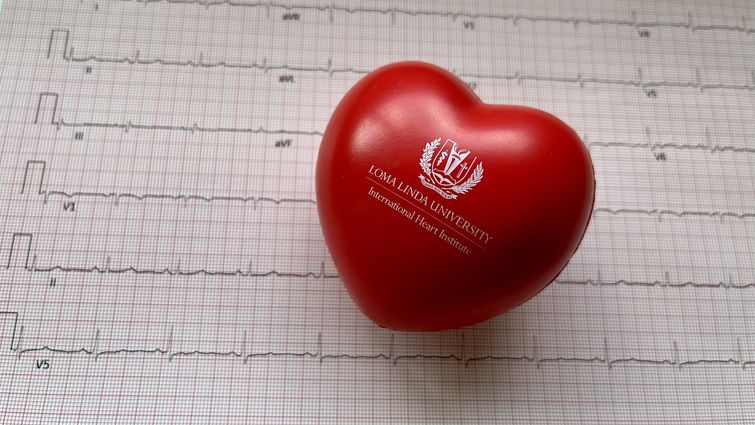

Heart rate, a measure of how fast the heart pumps blood throughout the body, provides insights into your overall cardiovascular function and fitness. The ability to read and interpret your heart rate is a valuable way to deepen your relationship with your heart health, says Jakrin (Joe) Kewcharoen, a cardiology fellow at Loma Linda University International Heart Institute.
For February's American Heart Month, Kewcharoen outlines the basics of heart rate as they pertain to women and men:
Which factors impact heart rate?
Several factors affect both women and men’s heart rates, including but not limited to:
- Physical Activity: When you exercise or engage in physical activity, your heart rate naturally increases to supply your muscles with more oxygen and nutrients.
- Age: Resting heart rate — how fast your heart beats when your body is at complete rest and not engaged in any physical or emotional activity — tends to decrease or slow with age.
- Fitness Level: More physically fit individuals often have lower resting heart rates because their hearts are more efficient at pumping blood.
- Emotional State: Stress, anxiety, and intense emotions can cause your heart rate to rise. Relaxation techniques can help lower it.
- Medications and Substances: Certain medications, caffeine, and nicotine can increase or decrease heart rate.
- Illness and Infection: Fever or illness can cause a temporary increase in heart rate as your body fights off infection.
Read: Do you know your 5 numbers? Keeping a pulse on heart health
Hormones also play a significant role in controlling heart rate; gender-specific hormones can lead to different heart rates between the sexes. Estrogen, a female hormone, can increase heart rate during certain phases of the menstrual cycle. Hormonal changes, like those during pregnancy or menopause, can also impact heart rate in women.
What is a healthy rate?
Each person’s optimal heart rate differs by age, fitness level, and overall health condition. In general, however, the American College of Cardiology defines a normal heart rate for men and women as ranging between 50-100 bpms. However, a physically active person may physiologically have a lower resting heart rate of less than 50 bpm.
Women generally have a slightly higher resting heart rate (on average, an additional 5-10 beats per minute (bpm)) compared to men because of physiological differences between their hearts. The female heart generally features a smaller cavity size and pumps less blood with each beat; a smaller heart needs to pump faster to maintain blood flow throughout the body.
Read: The truth about heart disease in women
When should I talk to a healthcare provider about heart rate?
If you haven’t already, discuss your heart rate with your health care provider to understand the significance of your personal results — especially if your heart rate falls outside of the normal range (50-100 bpm), which can be characterized as either bradycardia (<50 bpm) or tachycardia (>100 bpm). Even a heart rate between 50-100 bpm but is markedly irregular could be considered abnormal and further investigated.
Know that not all bradycardia, tachycardia, or irregular heart rates are dangerous — patients and their care providers should take all the considerations into mind. Remember that athletes can have physiologic bradycardia because their hearts are more efficient at pumping blood. Alternatively, heart rate may naturally enter the tachycardia range of over 100 bpm with exercise or intense activity.
When interpreting heart rate, care providers focus on how the heart conducts electricity. Your heart is a four-chambered muscular pump that runs on its own electrical system, the cardiac conduction system. The system works like a natural pacemaker, sending electrical signals to tell your heart muscles when to contract and pump blood. In other words, the cardiac conduction system controls heart rate.
Causes for concern include when the heart conducts electricity through an abnormal route, generates electricity from abnormal spots, or when the electricity is blocked. Cardiac imaging, such as electrocardiograms, helps experts assess the heart's electricity. Familiarize yourself with warning signs and symptoms of dangerous arrhythmias (abnormally slow, fast, or irregular heartbeat), such as loss of consciousness, palpitations, shortness of breath, and chest pressure. The more severe the symptoms, the more urgent one should seek medical attention.



